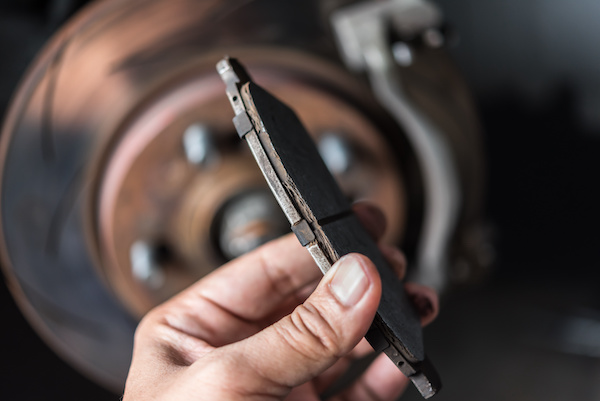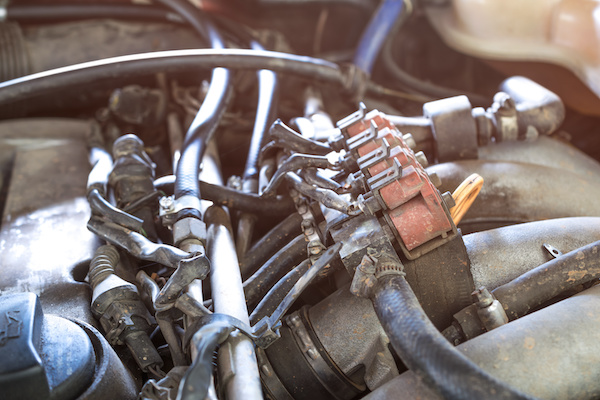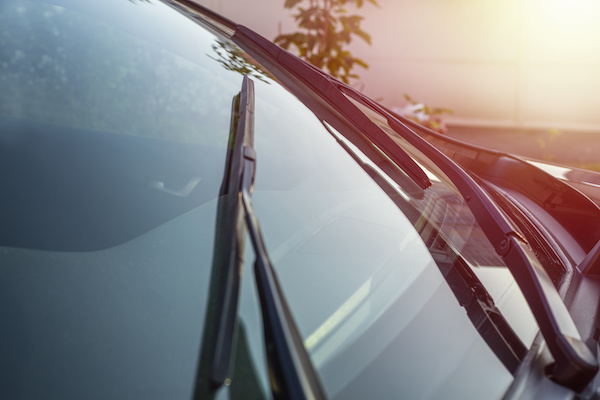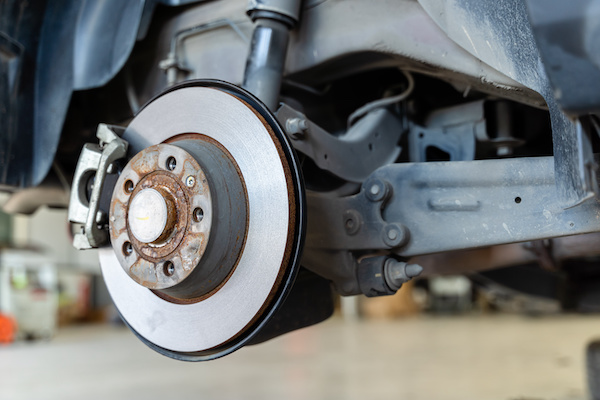Posted on 2/23/2023

Audi is a very popular and respected name in the car industry. It has decades of experience in making vehicles that are sporty and elegant. If you have ever looked at one, you probably spotted a variety of number and letter combinations for its model. Here we will take a closer look and explain the models, so you know the differences between them. A/S/RS Models The A/S/RS models can be sedans, coupes, hatchbacks, and wagons, depending on the trim and year. Let's start with the A-class vehicles. These are the entry-level Audi and the least expensive - offering a wide variety of submodels like the A4 and A3. Next is the S line, which is more luxurious and powerful. These models are perfect for traveling far, especially the S6 and S8 - being the biggest and most expensive in the lineup. The RS badge is very special because it offers everything Audi stands for. It's very sporty and powerful but at the same time lavish and comfortable. Again as with the ones before, it has a few s ... read more
Posted on 1/30/2023

Every vehicle owner relies on their vehicle to get them from one place to another safely. It would never be possible without a functional brake system and brake pads. Brake pads provide smooth and reliable stops, and they endure some of the most wear and tear in the brake system. When you service the brake system, you may wonder what type of brake pads are most suitable for you and your car. Today, there are three categories of brake pads available on the market – Organic, Semi-metallic, and Ceramic. We will dive deeper into the latter two. The differences between the types of brake pads all come down to the materials used in making them. Each brake pad has its pros and cons. Let’s take a look. Semi-Metallic vs Ceramic Brake Pads Semi-Metallic - (Sometimes shortened to just be metallic) These are approximately 30-70% made of metals. It may be copper, iron, steel, or other similar composites. They also have a graphite lubricant. These brakes are great for the every ... read more
Posted on 12/22/2022

Without fuel, most machines cannot run, and that includes your car. If you notice your vehicle depicting worrying symptoms, quickly diagnose the issue and fix it especially when it involves fuel system cleaning. Signs your fuel system is ready for a cleaning There are some tell-tale signs you can look out for in case you suspect your fuel system might be in need of cleaning, Starting problems A common indicator of a defective fuel system is problems igniting and/or rough idling. If you're experiencing difficulties starting your car and smell fuel, the gas pump may be stuck open, enabling fuel to overwhelm your engine. It's conceivable that your machine isn't getting enough fuel if your automobile idles restlessly. This may be remedied by cleansing the fuel system. Inadequate Gas Mileage Your vehicle will consume more fuel if it does not receive enough gas for the fuel combination. It may be assumed that jammed injectors would increase your gas mileage because less ga ... read more
Posted on 11/29/2022

WIndshield wiper blades are some of the most useful tools on our vehicles. They help clear rain, snow, dust, and other obstructions that may block your view through the windshield. The seasonal changes should make you question whether it is time to replace your windshield wipers. Many motorists tend to forget or don’t care for them until they become a problem. However, windshield wipers are a major part of regular vehicle maintenance too. If you want to protect yourself and your loved ones on the road, you should try to replace them every six to twelve months. Waiting over 15 months is too big of a risk. This goes for vehicles with a rear windshield wiper too. Most of the time, you can just go by how your wipers look and operate and determine whether you need new ones. When the wiper blades are doing what they are supposed to, sweeping moisture off your windscreen, they are good. Here are the three most common symptoms that mean it is time to replace them: #1 - S ... read more
Posted on 10/28/2022

Shock absorbers play an essential role in keeping your ride smooth and comfortable. They work by dampening the impact of bumps and potholes, absorbing some of the shocks before it reaches the rest of the vehicle. Over time, however, they will wear out and need to be replaced. How Long Does Shock Absorbers' Material Last? The typical lifespan of a shock absorber is 4-5 years, although this varies based on the road conditions it's driven on. For example, if you only drive your car on smooth roads, the shocks could last up to 10 years. However, if you frequently encounter harsh driving conditions like cracks or potholes, they may not even last 5 years. Symptoms Showing the Need to Replace Your Shock Absorber You'll know it's time to replace your shock absorbers when you notice changes in how your vehicle rides. The symptoms may come in the form of; 1. Uneven Tire Wear If you notice that your tires are wearing down quicker on one side than the other, it could be a si ... read more
Posted on 9/29/2022

It's a relatively common misconception by motorists that every car needs to have its engine warmed before driving, and that failure to do so will cause it to perform with less power than expected. In fact, providing a vehicle is less than around 15 years old, there's absolutely no need to warm it up, and any sluggishness or loss of accelerating power you experience, should not be attributed to this fact. If you put your foot on the pedal and the car doesn't accelerate with as much gusto as usual, it's likely that there's another cause, and one that can only be properly assessed and addressed by a professional mechanic. Slow or low acceleration? If a vehicle hesitates or provides only minimal acceleration when the gas pedal is fully depressed, it's probable that there's a fuel or emissions system fault. It's also possible that you don't fully realize the extent of the car's driveability issues until you attempt a steep incline, or need to speed ... read more
Posted on 8/29/2022

It is every driver’s ultimate responsibility to keep their brakes in good condition so that everyone on the road can be safe. Brake service is a crucial part of preventative maintenance. If neglected, you are at risk of serious problems and costly damages down the line. Brakes can lose their effectiveness as early as 20-25K miles. Typically, they wear down from wear and tear, poor braking habits, and the type of environment in which they operate. It is usually recommended that you have your brake system completely inspected every 6 months or at the time of service. To celebrate Brake Safety Awareness Month, we are excited to share the following braking tips with you: Tips on How to Keep Your Brakes Longer Tip #1: Remove Extra Weight | When you haul heavier items around, it can negatively impact your brakes. It adds extra burden on the brakes, wearing them down quicker. Therefore, we recommend only carrying items and equipment that you need. Tip ... read more
Posted on 7/26/2022
.jpeg)
A summer maintenance checklist can help ensure your car is in good shape for those family road trips and beach days. You can avoid a breakdown or expensive repair bill down the road by completing some simple tasks. Here are a few things to remember as you prepare your car for summer fun. Check the Air Pressure in Your Tires One of the most crucial things you can do to maintain your car running well is to ensure the tires are inflated to the correct level. The recommended pressure is usually printed on the side of the tire. If the pressure is low, use an air compressor or hand pump to add air until it reaches the proper level. Check the Levels of All Your Fluids Another important part of summer vehicle maintenance is checking all fluid levels under the hood. This includes coolant, brake, power steering, and transmission fluid. Check your owner's manual to find out where each reservoir is located and what the proper level should be. Change the Oil and Oil Filter If you haven ... read more
Posted on 6/25/2022
.jpeg)
A spark plug is a tiny device that plugs into the cylinder of an engine and delivers the spark for combustion via a conduit that connects the battery to the spark plug. An engine normally has as many spark plugs as cylinders, so a four-cylinder engine has four plugs and an eight-cylinder engine has eight plugs. Some vehicles have two spark plugs per cylinder for more accurate ignition. Spark plug are also necessary for maintaining the engine health and ensuring that they are working at peak efficiency. Therefore, If the spark plugs wear out, it might affect engine's fuel efficiency and performance. How often should you change your spark plugs? While sometimes ignored, replacing your spark plugs may be an excellent way of improving your vehicle's performance and it's usually included in the vehicle maintenance routine. On average, spark plugs should be replaced every 30,000 to 150,000 miles, depending on the type of plug that was installed. There are two distinct types o ... read more
Posted on 5/25/2022

A fair percentage of drivers either refuse to drive at night, or feel insecure about their driving abilities in the dark. Driving at night is definitely more dangerous and it comes with more risks. However, sometimes nighttime driving is necessary, and here are some tips to ensure safe nighttime travel: Test your headlights and taillights regularly. Make sure your vehicle's lights and signals (low beams, high beams, turning signals, and brake lights) are working correctly. If there is a problem, do NOT drive at night until it is repaired. Also, read the owner's manual and learn how to customize your headlights' angle and aim. Stay Alert! This one is extremely important because not only do you need to be fully awake and aware of your own driving, you also need to pay extra attention to other vehicles on the road who may be driven by sleepy drivers. Feeling tired? Stop at a well-lit convenience store and splash water on your face, get a cup of coffee, and you should ... read more